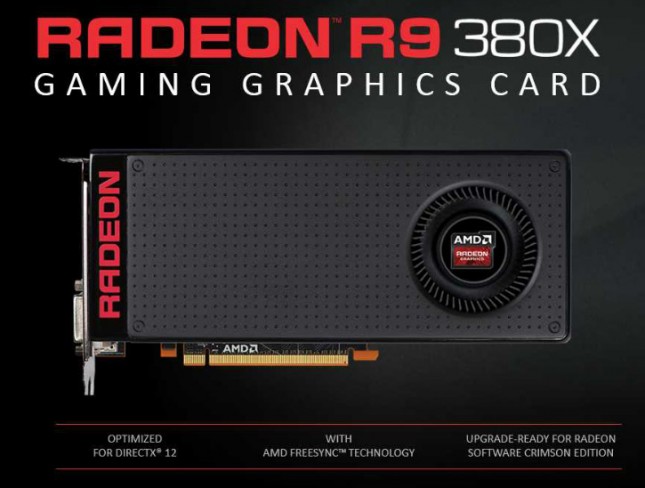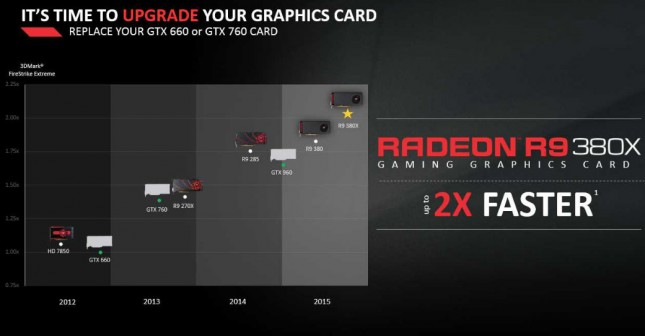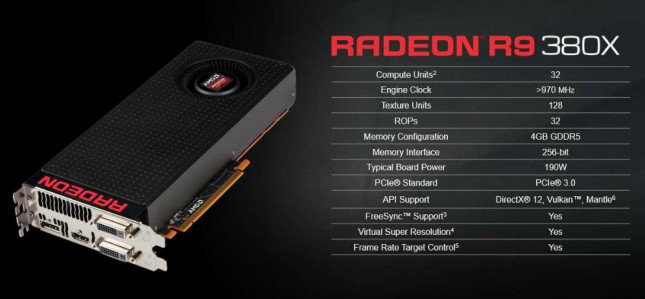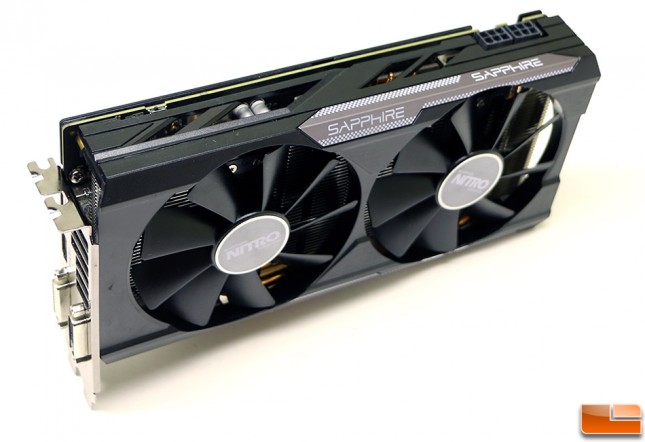Sapphire Radeon R9 380X Nitro Video Card Review
Sapphire Radeon R9 380X Nitro OC 4GB Video Card Review
AMD launched this week what is likely their last desktop graphics card of 2015, the AMD Radeon R9 380X. AMD is hopeful that this card at the $229 price point (185 inc. VAT for our readers in the UK) will be just what gamers will be looking to purchase this winter now that most of the big name games have come out for the holiday gaming season. The Radeon R9 380X is touted as being faster than the NVIDIA GeForce GTX 960 and help fill the performance and price gap in the NVIDIA lineup between the GeForce GTX 960 and GTX 970 graphics cards.
The AMD Radeon R9 380X uses the Antigua XT GPU, which is basically a fully enabled version of the Antigua Pro core that was used on the Radeon R9 380 that was released in June 2015. Some of our readers might recall that the Radeon R9 380 was a re-brand/speed-bumped Radeon R9 285 video card that was powered by the Tonga GPU that came out in August 2014. So, the AMD Radeon R9 380X GPU uses a fully featured GPU core that has been around for some time. That means we have a GCN 1.2 feature set card made on the 28nm manufacturing process. We wonder why AMD didn’t release a fully featured Antigua/Tonga core in 2014, but better late than never right?
The Radeon R9 380X has 2,048 processors, 128 texture units and 32 ROPs all tucked inside the fairly tiny 359mm^2 die. Many expected that AMD was holding something back when Tonga first came out and it appears that was true. The R9 380X has 4GB of GDDR5 memory running on a 256-bit bus at 1425 MHz or 5,700MHz effective. This is good for 182MB/s of memory bandwidth with the standard reference configuration. The core clock speed is 970MHz, but you’ll see many add-in board partners bringing overclocked cards to market well about this clock speed. The AMD Radeon R9 380X reference design as two 6-pin PCIe power connectors and is rated at 190W for typical board power. AMD also says that the Radeon R9 380X supports DirectX 12, TrueAudio, Virtual Super Resolution, Frame Rate Target Control and FreeSync.
All the usual AMD board partners will be releasing cards, but we were sampled the Sapphire Radeon R9 Nitro OC 4GB that is available for $239.99. This card is priced $10 higher than the Suggested Retail Price due to being an overclocked version. Sapphire bumped up the clock speeds on this card to 1040 MHz on the core and 1500 MHz (6000 MHz effective) on the Elpida GDDR5 memory, so it’s running a good deal faster than the reference cards. The downside to this is that Sapphire says that it consumes 225W of power up from the 190W seen on the reference card. You also get an improved GPU cooler, a backplate and more.
Let’s take a closer look at the Sapphire Radeon R9 Nitro OC 4GB video card and then see how it performs!




